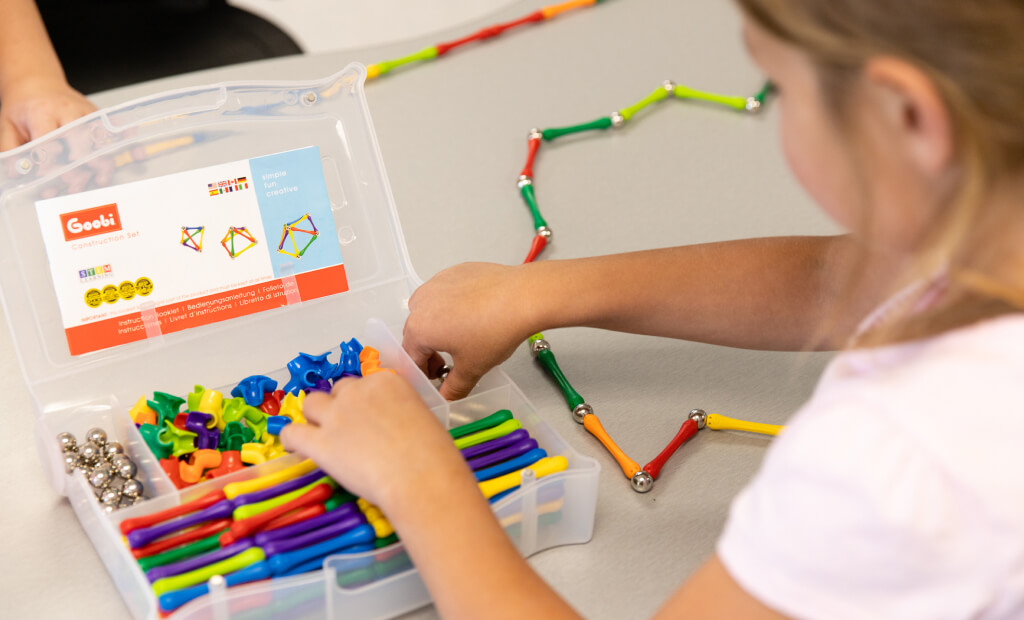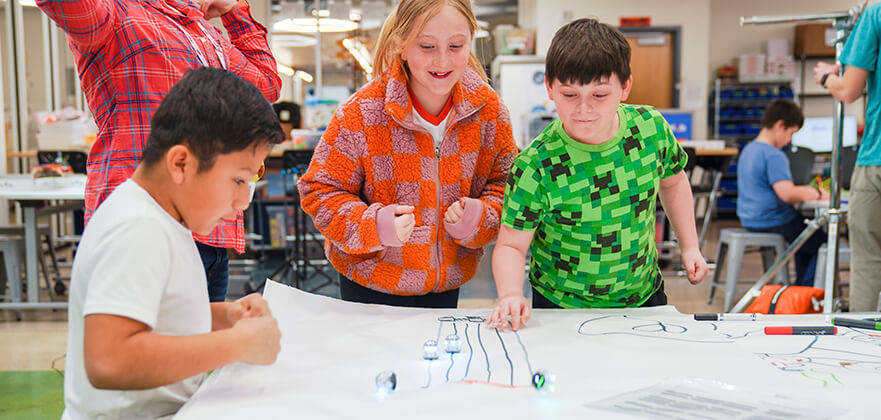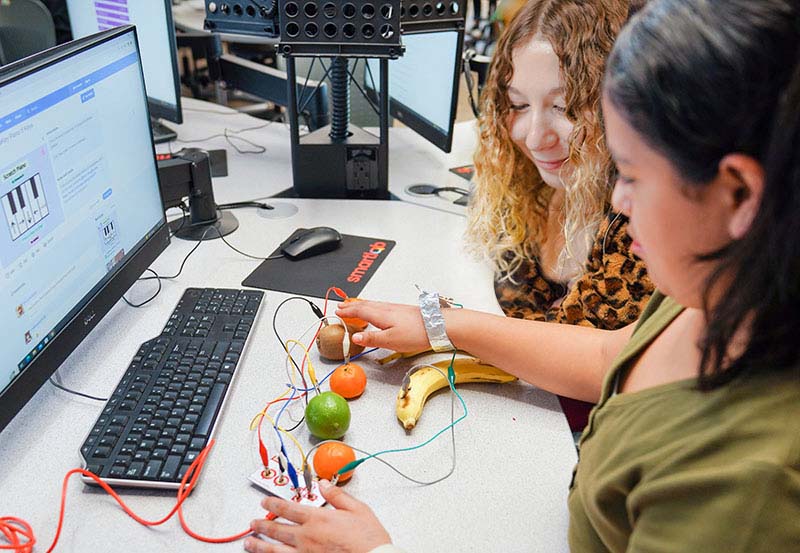Preparing Elementary Students for Future Success
It’s never too early to prepare students for future success—even more so now as we transition toward a 21st-Century work environment while continuing to overcome one of the biggest learning loss challenges in recent history.
Even as COVID-19 and its lockdowns fade into memory, the disruptive effects remain with us. Several studies conducted in 2024 show that many student populations are struggling with learning outcomes, with the vulnerable and underserved communities that were especially impacted by the pandemic facing the largest challenges. The pace of learning for many students has stagnated, and some populations have regressed, falling behind pre-pandemic achievement levels.
These effects are compounded by a range of issues—from lingering mental health concerns for student populations to the end of emergency federal relief funds that many districts were relying on—that are especially harmful for elementary school students. Students at the elementary level need to build fundamental skills and learning habits to succeed at higher grade levels and, eventually, in their careers.
“The core problem is the fact that most learners are not able to recall information or remember how to use important skills, which means that perhaps they have not been taught in a way that promotes mastery of these skills.”
— Rahman, Saemah et al. “The Development Of Expert Learners In The Classroom.” Contemporary Issues In Education Research.
To prepare students for future jobs and strengthen their ability to learn, we must establish consistent practices that withstand learning disruptions. And that requires building the foundations for relevant career skills at the elementary level.
Want to learn more about the impacts of learning loss and how to address it? Download our free resource.
Why Early Career Preparation Is Important
Traditional schooling often builds on previously learned skills and relies on the assumption that students will improve with repeated practice. In early education, however, fostering creativity, curiosity, and positive learning behaviors is increasingly viewed as more important than skill mastery.
Students’ life circumstances have a powerful influence on their learning behaviors as well as their career aspirations. Everything from their family’s income level and social status to larger cultural issues, such as lack of social mobility, climate crises, inequality, and injustice, affect each student’s ability to aspire to and achieve future success.
If students are to be prepared for the future, then they need to believe that success is possible. Our perceptions about certain industries and career aspirations form as early as 10 years old and generally remain unchanged at the age of 14. If younger students believe that certain careers or levels of success are unattainable, and that certain topics or classes are only for “other people” then they’re likely to disengage from learning. This is similar to the affective filter observed in some classrooms, where learners develop psychological and emotional obstacles that impair their motivation and confidence in learning.
So, while career and technical education (CTE) and workforce readiness is important for high school students about to enter the workforce, showing younger students what’s possible through early career preparation is equally as valuable, so they can build the confidence and learning habits essential for future success.
Current Job Market Trends
How is it possible to prepare students for jobs that possibly don’t even exist yet? While no one has a crystal ball to see the future, what is increasingly certain is that automation and AI are likely to play important roles in every industry. Understanding these trends can point you in the right direction on how to support learning outcomes.
- Digital technology adoption is highly likely to remain a key driver of business transformation in the next five years. Consequently, technological advances are likely to continue to disrupt existing industries and create entirely new ones.
- The U.S. Bureau of Labor Statistics lists health services, green energy industry, data science, and computer science as fields with the projected fastest growing occupations. This is consistent with other resources that include various positions in healthcare, social services, and analyst positions as likely to be highly in-demand.
- The flipside of in-demand positions is disappearing jobs. Employers anticipate a structural labour market churn of 23% of jobs in the next five years, with a large decrease in clerical roles and the fields of traditional security, manufacturing, and commerce.
- Technology is also likely to change traditional top-down leadership as “flatter” hierarchies become even more commonplace. This will give employees greater space to be creative but will also entrust them with more responsibilities.
Again, these are assumptions, and unforeseen circumstances could completely upend any of these trends. What is not likely to change are the importance of complex problem-solving skills and adaptability. Adaptability was recently recognized as the fastest-growing, in-demand skills for professionals. The more that students have the ability to pick up new skills and adapt to new situations, the more they will be able to adjust to new circumstances, even in their professional careers.
Essential Skills Elementary Students Need for Future Jobs
If you want to prepare students to be adaptable for the future, then you will need to create environments and curriculum that prioritize these essential workforce readiness skills:
- Digital literacy and technological proficiency enable students to effectively use digital tools and adapt to emerging technologies. Proficiency in digital literacy ensures they can navigate, analyze, and utilize information in academic and professional settings.
- Critical thinking and problem-solving skills help students analyze situations, identify challenges, and devise solutions. They are crucial for decision-making in any career and foster adaptability in a rapidly changing job market.
- Transferable skills and lifelong learning skills including communication, teamwork, and time management are valuable across every industry. Encouraging a mindset of lifelong learning helps students remain adaptable and able to continuously improve to meet future demands.
- Emotional intelligence and soft skills provide the ability to manage emotions, empathize, and collaborate with others, which enhances interpersonal relationships and teamwork. These skills are vital for contributing to a positive workplace environment and maintaining professional relationships.
- Creativity and innovation help students think outside the box and develop unique solutions. Innovation drives progress in any field, making this skill highly valuable in fostering future leaders and problem-solvers.

How Schools can Help Prepare Students for Future Jobs
There are many different strategies for teaching these essential skills, and different approaches will be more effective depending on class structure, available resources, and a student’s life circumstances. There is no one-size-fits-all approach we can prescribe, but there are an array of best practices we can recommend, from teaching strategies to how to incorporate technology in the classroom.
Educational Strategies
- Build a curriculum based on project-based learning and / or problem-based learning. Project-based learning / problem-based learning (PBL) enhances problem-solving abilities and promotes teamwork by engaging students in projects that seek to solve real problems. PBL encourages active exploration and application of knowledge, making learning more meaningful and relevant.
- Look for ways to promote authentic learning experiences. The more you can provide opportunities for students to connect classroom content with their real-life contexts, the more you’ll help them understand the practical applications of their studies. Bringing real-world experiences into the classroom helps to increase engagement and motivation.
- Find methods of differentiated instruction. Tailoring teaching methods to accommodate diverse learning styles and abilities ensures that all students can access and engage with the curriculum effectively. Adaptive software technology and strategies like flexible grouping and choice boards support personalized learning experiences.
- Place an emphasis on social and emotional learning (SEL). Developing skills like resilience, adaptability, and effective communication prepares students to navigate the complexities of future workplaces. PBL provides an ideal environment for social emotional learning, which fosters positive learning and supports personal growth.
Learn how SmartLab Learning provides a flexible learning environment, a learning approach, and professional development to support schools in addressing the social-emotional needs of students in this free eBook.
- Incorporate STEM education across the curriculum. Science, Technology, Engineering, and Mathematics (STEM) is an interdisciplinary approach that equips elementary students with critical thinking, problem-solving, and collaboration skills essential for future careers. STEM is a natural fit for PBL and fosters creativity, resilience, and technological proficiency while inspiring interest in diverse career fields, especially among disadvantaged groups.
The Role of Educators and Parents
- Engage with the larger community. Organizing field trips and inviting guest speakers are great ways to encourage career exploration in elementary students. Reach out to the community to arrange visits to workplaces and invite professionals to speak about the work they do and how it impacts people’s daily lives.
- Maintain open communication. Support and encouragement for learners has to continue outside of the classroom. The school needs to strengthen parent-teacher communication and create opportunities for discussion about a child’s interests and aspirations—whether it’s an in-person parent-teacher conference or digital collaboration over a learning management system (LMS). The Centers for Disease Control has a strategy guide on how to build parent engagement in school health, which also has applications for encouraging more parental engagement in learners’ education.
- Collaborate to connect classroom learning to real-world applications. Instructors, parents, and community leaders can (and should) work together to highlight how academic subjects directly apply to different careers. PBL doesn’t have to be limited to the classroom. Creating opportunities for students to solve problems either at home or in a new environment encourages curiosity and exploration.
- Look for ways to teach goal-setting. Work together to help learners set both short- and long-term goals. Tasks that help to define SMART goals (Specific, Measurable, Achievable, Relevant, and Time-bound) can help establish attainable learning outcomes. Parents and educators should talk with learners about how to break up goals into manageable steps. Making the learner part of the process will help them develop important planning and organizational skills.
Incorporate Technology in Education
- Get comfortable with online learning platforms. Learners are highly likely to engage with digital learning platforms. Making use of Learning Management Systems (LMSs) such as Google Classroom, Khan Academy, and Seesaw can present interactive lessons, assignments, and resources in a way that engages students to enhance their digital literacy and learning skills. Collaborative tools such as Microsoft Teams and Padlet can enable students to work together online on group projects, honing their communication and teamwork skills in the process.
- Make use of career exploration apps. If you’re looking for ways to get learners engaged with a wide variety of careers, apps like Pathful Junior or Kuder Galaxy can empower students to explore different professions through interactive games, videos, and quizzes. Online communities such as KnowItAll.org can provide an interactive space for students to have dynamic job exploration experiences.
- Incorporate coding and programming tools into lessons. Coding is likely to be an important skill for many professions, and teaching it doesn’t have to be limited to its own course, or to older learners. Tools like ScratchJr and Tynker can be used by young learners to create programs for different classes—including social studies, reading, science, and language arts—to build problem-solving and computational thinking skills.
- Research different STEM tools, kits, and toys you can use. When teaching STEM, the use of physical tools and toys can effectively increase engagement. Robotics kits such as Sphero, Ozobot, and UKIT can help young learners develop engineering, creativity, and collaboration skills through building and programming activities. Game-based learning platforms including Minecraft Education and Kahoot! can be also used to create projects that inspire critical thinking and creativity.
Learn more about how to integrate robotics into your classroom with our blog post: How to Teach Kids Robotics.
Career Guidance and Counseling
- Provide early exposure to various career options. Try to incorporate career-related activities and discussions within existing subjects to help students make connections between their studies and potential careers. Tying PBL activities to “real problems” that professionals try to solve in their careers is an effective means of contextual learning.
The school may also host a “Career Exploration Day” where firefighters, veterinarians, artists, engineers, and other professionals visit classrooms to share what they do through interactive demonstrations or hands-on activities. - Offer mentorship programs and career resources. Career centers are intended for older learners, but they’re still resources that you can explore with elementary students. For example, partnering with local professionals and high school or college students can introduce young learners to various careers in an engaging and age-appropriate way.
Mentorship could also involve pairing older students with younger ones for projects and robotics clubs, or include individual and group counseling sessions where students can explore future pathways and see what they like. - Employ regular career assessments and activities. Assessments should not be used to “assign” learners to certain careers, but instead, as a way to help them identify their interests and strengths. Activities that allow learners to explore potential career paths can open them up to new possibilities they would not otherwise consider.
You could set up a “career day” event where students visit interactive stations representing various professions. Each station should have simple tasks or activities, associated with that career’s responsibilities such as diagnosing a patient, building a small structure, or baking a cake. The students could then have a discussion with educators about their favorite activities and what they found interesting, which can help identify patterns in their interests and relate them to broader career categories.
Looking for more ways to teach skills essential to future careers? Read our tips and advice in our full blog post: 10 Tips for Teaching 21st-Century Skills with Limited Resources.
Case Study
When the Phenix City School District in Phenix City, Alabama realized that the career landscape was evolving, they partnered with SmartLab to provide their elementary school students with STEM experiences that would be applicable to future careers. See how Phenix City is showing their learners what’s possible—setting the stage for their future success.
Preparing learners for future success and fulfilling careers is an ongoing responsibility for educators, parents, and community members. It’s not about assigning set roles or fitting students into boxes, but providing them with the tools, skills, and aspirations they need to adjust to a quickly changing world.
Providing learners with access to digital technology and curriculum grounded in project-based learning helps to not only build these skills, but also increase engagement.
FAQs
What are the key skills students need to learn for the workforce?
All students need to build skills in digital literacy, critical thinking, problem-solving, adaptability, and lifelong learning. Emotional intelligence, communication, teamwork, and creativity are also essential for collaboration and innovation in a dynamic, technology-driven job market.
Which learning strategies help facilitate workforce readiness?
Effective learning strategies can include hands-on projects, collaborative group activities, problem-solving exercises, and integrating technology in lessons. Encouraging critical thinking, creativity, and adaptability through real-world applications and personalized learning experiences helps build foundational skills like communication, emotional intelligence, and lifelong learning.
How does STEM help students prepare for the workforce?
In today’s world, every job is a STEM job. STEM equips students with critical thinking, problem-solving, and technological skills essential for modern careers. STEM education fosters creativity, collaboration, and adaptability—all of which are powerful assets necessary for adapting to technological advancements and tackling real-world challenges with confidence.




